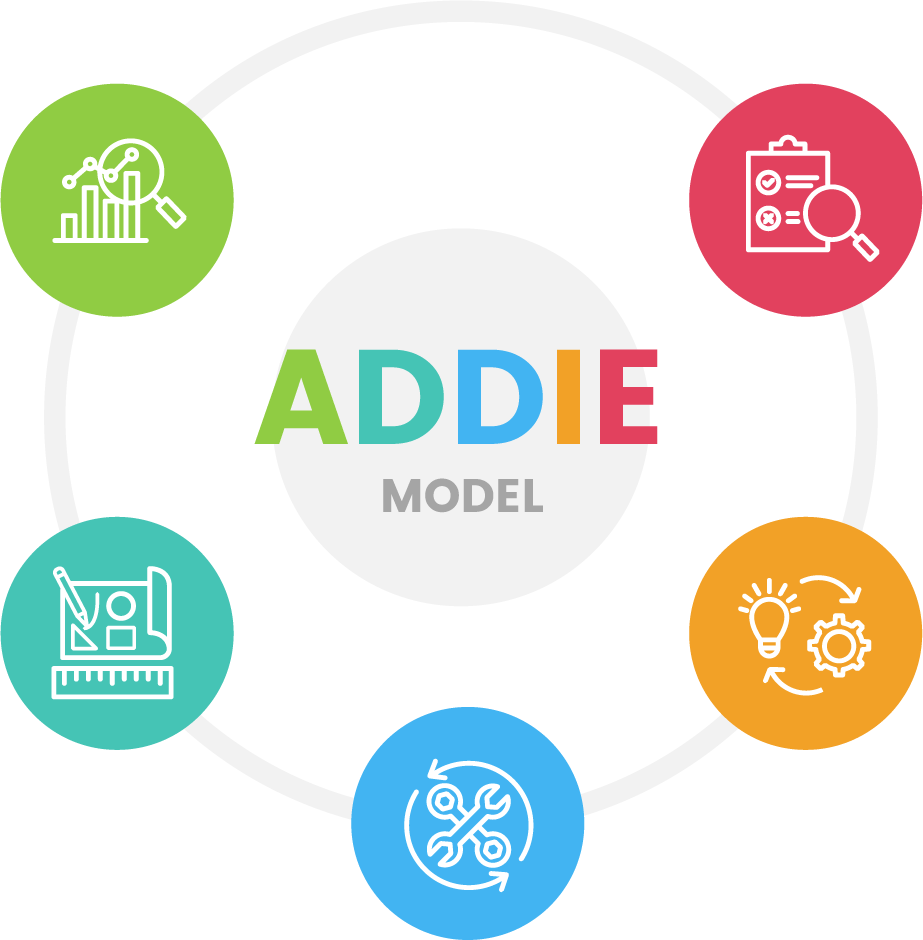CPDs come in a variety of forms, and not all activities are created equal. You have probably sat through a session that felt more like a data dump than a development opportunity—overloaded slides, a disorganised delivery, and nothing likely to take away. On the other side, there are those sessions that leave you feeling empowered, energised, and ready to implement new skills straight away.
What makes the difference? It is not the topic or the trainer’s charisma. It’s the design.
Key Takeaways
- Instructional design provides the strategic backbone for CPD by ensuring that learning objectives are clearly defined, content is logically structured, and delivery methods are aligned with learner needs, leading to measurable and relevant professional outcomes.
- Instructional design models guide CPD providers in planning, developing, and refining activities that are both learner-centred and outcome-oriented, ensuring continuous improvement through feedback and evaluation.
- Without instructional design, CPD can become disjointed, disengaging, and ineffective in delivering real professional growth.
Behind every impactful CPD session is a clear, structured, and intentional plan—known as Instructional Design. This is what shapes the experience, brings focus, and transforms content into meaningful, measurable learning. It ensures CPD is not just something you attend, but something you actively experience and apply.
Without a structured design, CPD risks becoming disjointed, disengaging, and ineffective.
What Is Instructional Design?
Instructional design is the intentional architecture of learning. It refers to the systematic process of planning, developing, and delivering learning experiences that facilitate effective knowledge and skill acquisition. Consider it the framework for successful learning; just as a building needs a well-thought-out blueprint, so too does effective CPD need to be carefully planned in order to produce the desired results.
This idea may be referred to as instructional systems development (ISD) or instructional systems design. Whatever the nomenclature, the basic goal is always the same: developing intentional, structured learning experiences that truly work.
Core Components of Effective Instructional Design
Effective instructional design rests on three foundational pillars that work together to create cohesive learning experiences:

These three elements don’t operate in isolation. They form an interconnected system where changes to one component require consideration of the others, ensuring coherence throughout the learning experience.
What Does Good Instructional Design Bring to CPD?
When CPD is built with intention and structure, the results are tangible. Instructional design doesn’t rely on guesswork—it follows a systematic approach that strengthens the learning experience from the inside out.
At its core, instructional design ensures that every element of a CPD activity is aligned to achieve meaningful outcomes. From the way content is sequenced to how it is delivered; everything works together to serve a purpose.
Here’s what strong instructional design brings to the table:
- Clear purpose – Learning objectives are defined and aligned to professional goals
- Logical progression – Content follows a coherent structure that supports learner understanding
- Evidence-informed methods – Techniques are grounded in learning science and best practice
Sessions are not simply informative—they become transformative. This approach helps CPD move beyond compliance and become a catalyst for measurable growth.
Instructional Design Models
The primary goal of any instructional design model is to make learning purposeful, impactful, and measurable. Each model offers a structured framework to guide the design process, with specific strengths that suit different CPD contexts.
ADDIE Model (Most Popular)
The ADDIE model is a structured, five-phase framework used in instructional design to guide the development of effective learning experiences. Each letter represents a stage in the process:


It is widely used in CPD and training because it ensures learning activities are purposeful, measurable, and aligned with intended outcomes.
Alternative Models
- Backward Design starts with desired learning outcomes and works backward to assessments and learning activities. This approach ensures everything serves the ultimate learning goals.
- SAM (Successive Approximation Model) takes an agile, iterative approach with rapid prototyping and continuous refinement based on feedback. This model works particularly well for innovative CPD programmes or when working with evolving content areas.
The choice of model depends on factors such as timeline constraints, available resources, learner characteristics, and the complexity of the subject matter. Many successful CPD programmes blend elements from multiple models to create customised approaches.
Why Instructional Design Matters in CPD
Effective instructional design serves as the foundation that transforms routine professional development into meaningful career advancement. Key benefits include:
- Creates alignment between learning activities and professional standards
- Ensures CPD directly supports career development and organisational goals
- Improves learner motivation through relevant and engaging content
- Leads to better retention and application of new skills
- Makes CPD activities measurable and demonstrably impactful
- Builds credibility for CPD providers
- Helps organisations justify investments in professional development
- Enables continuous improvement through systematic evaluation
- Ensures time spent translates into genuine professional growth rather than just compliance
Core Instructional Design Principles behind Endorsed CPD Activities
Effective design supports the trainer by offering a roadmap for delivery and supports the learner by making content more digestible, relevant, and engaging. For a CPD activity to be truly effective and worthy to apply for endorsement, it must be built on a strong instructional foundation. Below are the key design principles that ensure the learning experience is purposeful, structured, and aligned with meaningful outcomes. An endorsement- ready CPD activity must include:
Title and Structure
- Well-crafted titles that are concise, specific, and reflect both content and target audience
- Logical progression where each component builds on the last and supports learning objectives
- Coherent flow that avoids unrelated or disconnected topics
Learning Objectives
- Clear and SMART objectives that are Specific, Measurable, Achievable, Relevant, and Time-bound
- Aligned with content so that each learning objective reflects the outcomes of the CPD activity
- Outcome-focused to ensure the development of relevant skills, knowledge, or competencies
- Non-conflicting and realistic so as not to confuse or mislead participants about the intended learning
Content Quality
- Accuracy and up-to-date information aligned with learning objectives
- Research-based content following relevant industry standards
- Interactive and practical to enhance engagement and application
- Inclusive and ethical, respecting diversity and accessibility
Delivery Standards
- Adequate duration for meaningful engagement and reflection
- Qualified trainers with current knowledge and CPD engagement
- Flexible methods that meet varied learning needs
- Clear communication with accessible language
Assessment Methods
- Varied techniques such as reflective account, MCQs, true or false, fill in the blanks, role play, scenario-based assessment, practical skill assessment or Q/Ans
- Aligned with learning objectives to accurately measure knowledge and skill acquisition
- Transparent criteria shared with participants to ensure fair and consistent evaluation
- Responsive to feedback allowing continual improvement in assessment design and delivery
Common Pitfalls to Avoid
Without proper instructional design, CPD programmes frequently encounter predictable challenges that undermine their effectiveness:
- A one-size-fits-all approach fails for different experience levels and learning preferences.
- Poor structure leaves learners confused about priorities.
- Lack of coherence prevents seeing connections between programme elements.
- Absence of engaging strategies creates passive rather than active learners.
- Significantly reduces the retention and application of knowledge.
- Fails to bridge the gap between theory and practice.
- Participants gain information but lack the skills to apply it effectively.
- Results in programmes that don’t fully satisfy anyone’s needs.
If your CPD activity already meets all the essential criteria—clear outcomes, structured learning design, engaging delivery, and measurable impact—then the only thing it needs to truly stand out is the CPD Endorsed Trust Mark. It is more than a stamp; it signals quality, rigour, and relevance.
Conclusion
CPD is transformed from a routine information exchange into a potent professional development that brings about long-lasting change through instructional design. It offers the structure for transforming education into something significant, quantifiable, and immediately applicable to professional practice. Adopting a design mindset for CPD providers entails going beyond subject matter expertise to become learning experience architects. In order to create experiences that meet learners where they are while pushing them to grow, it is necessary to first understand them as complex individuals with a range of backgrounds, motivations, and contexts.


























